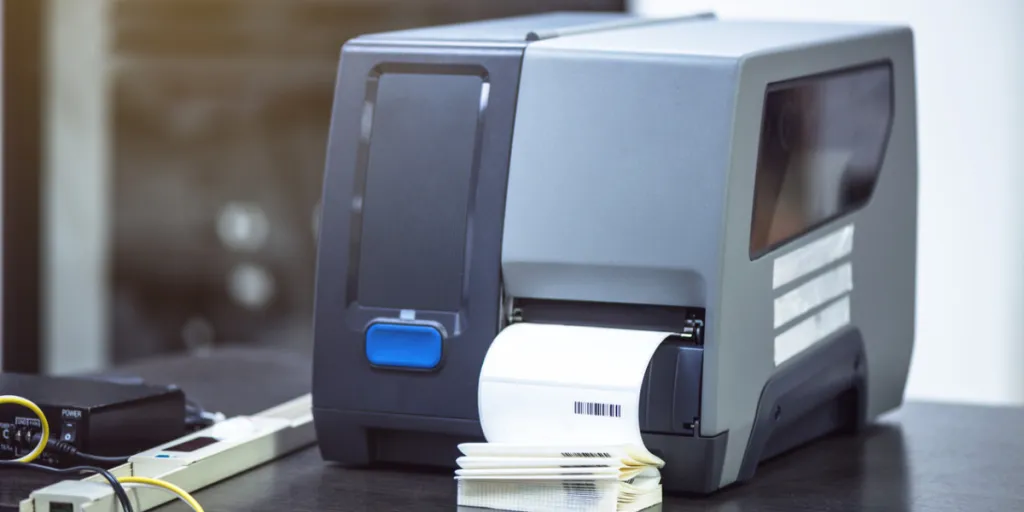Selecting the right label printer for your business is a critical decision that can impact your operations, efficiency, and customer satisfaction. With a multitude of options available in the market, it’s essential to understand the key factors that should guide your choice. This article provides a comprehensive guide to help you choose the best label printer for your business needs, considering aspects such as types of label printers, printing technology, label size and material, connectivity options, and budget considerations.
Types of Label Printers
Label printers come in various types, each suited for different applications and industries. The main categories include:
1. Desktop Label Printers
Desktop label printers are compact and designed for light to medium-duty printing tasks. They are ideal for small businesses that require occasional label printing, such as for shipping labels, barcodes, or product labels. These printers are typically easy to use and offer good print quality at an affordable price.
2. Industrial Label Printers
Industrial label printers are robust and built to handle high-volume printing in demanding environments. They are commonly used in manufacturing, warehousing, and logistics. These printers offer fast printing speeds, durability, and the ability to print on a variety of label materials. They are a good choice for businesses with high printing demands and the need for durable labels.
3. Mobile Label Printers
Mobile label printers are portable and battery-operated, making them perfect for on-the-go labeling needs. They are widely used in retail, healthcare, and field service industries for printing labels, receipts, and tickets. These printers are compact, lightweight, and can connect to mobile devices via Bluetooth or Wi-Fi.
4. Commercial Label Printers
Commercial label printers strike a balance between desktop and industrial models. They are suitable for businesses with moderate to high printing volumes and offer a range of features, including high-resolution printing and advanced connectivity options.
Printing Technologies
Label printers use different printing technologies, each with its own advantages and limitations. The most common printing technologies are:
1. Thermal Printing
Thermal printing is a popular choice for label printers due to its speed and efficiency. There are two types of thermal printing: direct thermal and thermal transfer.
- Direct Thermal Printing: This method uses heat-sensitive paper, which darkens when exposed to heat. It’s a cost-effective option for short-term labeling needs, such as shipping labels or receipts. However, direct thermal labels are not suitable for long-term use as they can fade over time.
- Thermal Transfer Printing: This method uses a ribbon that transfers ink onto the label when heated. Thermal transfer printing produces durable and long-lasting labels, making it ideal for applications that require high-quality, permanent labels. It can print on a variety of materials, including paper, polyester, and polypropylene.
2. Inkjet Printing
Inkjet label printers use liquid ink to produce high-quality, full-color labels. They are ideal for businesses that require vibrant and detailed labels, such as for product packaging or promotional materials. Inkjet printers can print on various media types, including glossy and matte labels. However, they tend to be slower and more expensive than thermal printers.
3. Laser Printing
Laser label printers use toner and a laser to produce high-quality prints. They are suitable for businesses that require high-resolution labels and can print in color or monochrome. Laser printers are faster than inkjet printers and offer excellent print quality. However, they are generally more expensive and may not be suitable for printing on certain label materials.
Label Size and Material
The size and material of the labels you need to print are crucial factors in choosing the right printer. Consider the following:
1. Label Size
Determine the range of label sizes your business requires. Some label printers are designed to handle specific label sizes, while others offer adjustable settings to accommodate a variety of dimensions. If you need to print labels of different sizes, look for a printer with versatile label size options.
2. Label Material
The choice of label material depends on the intended use of the labels. Common materials include:
- Paper: Suitable for general-purpose labels, such as shipping or product labels. Paper labels are affordable and come in various finishes, including matte, glossy, and textured.
- Synthetic Materials: Ideal for labels that need to withstand harsh conditions, such as exposure to moisture, chemicals, or UV light. Common synthetic materials include polyester, polypropylene, and vinyl.
- Specialty Materials: For specific applications, such as tamper-evident or security labels, consider printers that can handle specialty materials.
Connectivity Options
Connectivity options determine how you can connect the label printer to your computer or mobile devices. Common connectivity options include:
1. USB
USB is a standard connection method that provides a reliable and straightforward way to connect your label printer to a computer.
2. Ethernet
Ethernet connectivity allows you to connect the label printer to a network, enabling multiple users to access the printer from different locations. This option is ideal for businesses with multiple workstations.
3. Wi-Fi
Wi-Fi-enabled label printers offer wireless connectivity, allowing you to print labels from anywhere within your network range. This option is convenient for businesses with a mobile workforce or limited workspace.
4. Bluetooth
Bluetooth connectivity is useful for mobile label printers, allowing you to connect to smartphones or tablets for on-the-go printing.
Budget Considerations
Budget is an important factor when choosing a label printer. The cost of a label printer can vary significantly depending on the type, features, and brand. Consider the following budget-related factors:
1. Initial Cost
The initial cost of the printer includes the price of the hardware and any additional accessories, such as label rolls or ribbons.
2. Operating Costs
Consider the ongoing costs of consumables, such as labels, ink, or ribbons. Thermal printers generally have lower operating costs compared to inkjet and laser printers.
3. Maintenance and Support
Factor in the cost of maintenance and support. Some printers may require regular maintenance, such as printhead cleaning or replacement. Additionally, consider the availability of customer support and warranty options.
Conclusion
Choosing the right label printer for your business involves considering various factors, including the type of printer, printing technology, label size and material, connectivity options, and budget. By carefully evaluating your business’s specific needs and requirements, you can select a label printer that enhances your efficiency, improves label quality, and meets your budget constraints. Whether you need a compact desktop printer for occasional use or a robust industrial printer for high-volume production, there’s a label printer out there that’s perfect for your business.




